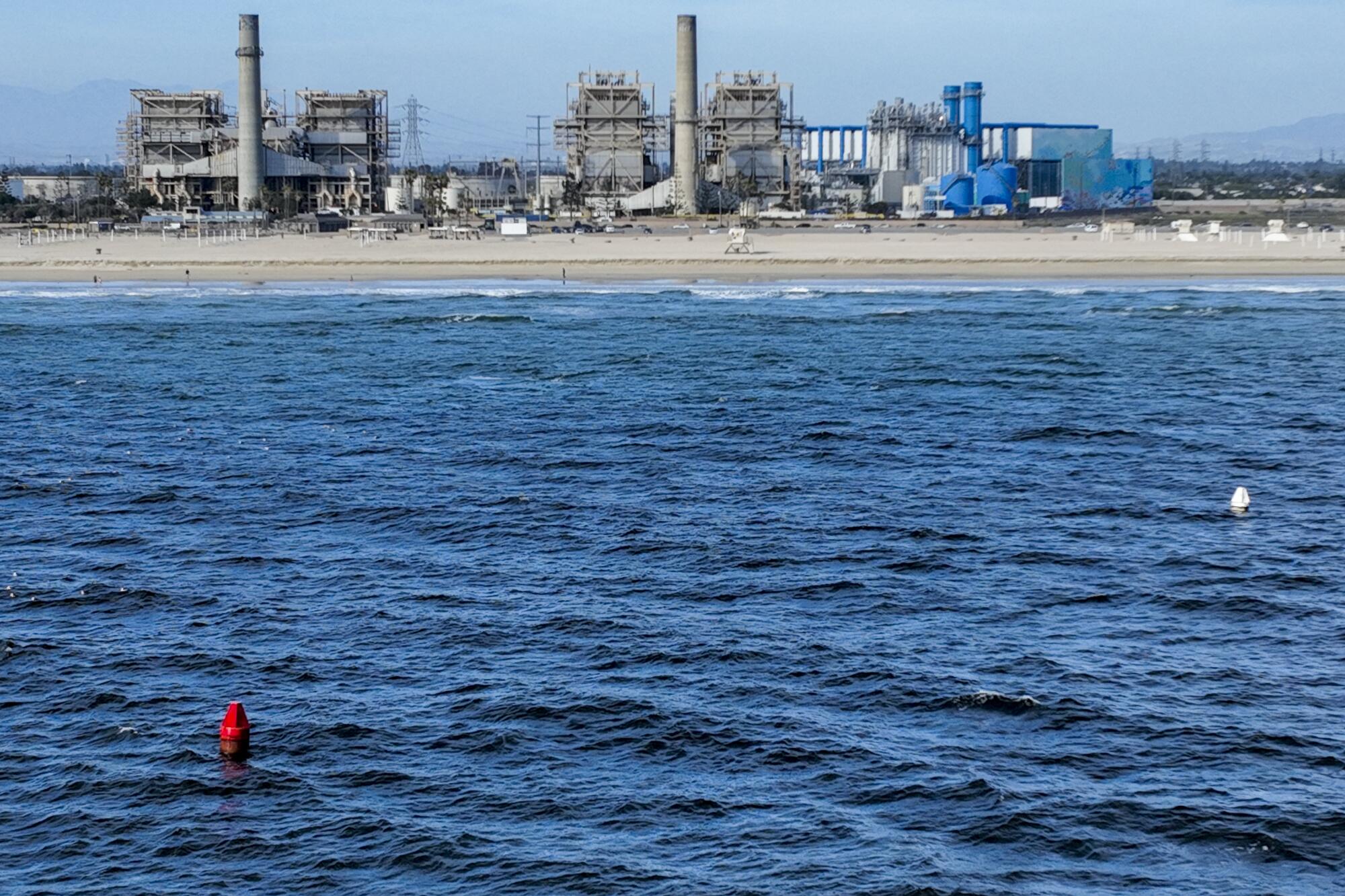
- Share via
Among the many complex arguments over water in California, one particularly heated debate centers on whether the state should seek more drinking water from a plentiful but expensive source: the Pacific Ocean.
The debate has reached a critical stage in Huntington Beach, where Poseidon Water has been trying for more than two decades to build one of the country’s largest desalination plants.
The California Coastal Commission is scheduled to vote next month on whether to grant a permit to build the plant. But in a stance that could hinder the company’s plans, the agency’s staff recommended on Monday that the commission reject the proposed project.
The staff wrote that the project “raises significant and complex coastal protection policy issues.” Concerns included flood risks based on updated projections of sea-level rise, the location in an industrial area “with a history of contamination problems” and higher costs for water that would probably mean “significant burdens” for low-income communities, which they said would raise environmental justice issues.
The long-running fight has also encompassed contentious issues such as the effects on marine life, power requirements and whether the low-lying site is vulnerable to tsunamis, as well as the company’s heavy political lobbying for the lucrative project.
At the heart of the debate, there are fundamental arguments about whether Orange County really needs the water, how the area should adapt to worsening droughts with climate change, and whether the costs would be a reasonable investment to secure reliable water or an exorbitant megaproject that would mean higher water rates for decades to come.
The dispute is playing out as Western states endure rising temperatures and a regionwide drought that scientists say is the driest 22-year period in 1,200 years. Shrinking water sources and depleted reservoirs have prompted Gov. Gavin Newsom and other officials to appeal for Californians to reduce water use.
The company and its supporters argue that building the $1.4-billion desalination plant would buttress local water supplies and make the area more resilient. Opponents call it a boondoggle that would benefit parent company Brookfield Infrastructure while saddling ratepayers with the costs.
“We’re not saying we should never do desalination, but it should be the last resort,” said Andrea León-Grossmann, director of climate action for the nonprofit group Azul. “It’s just not needed.”
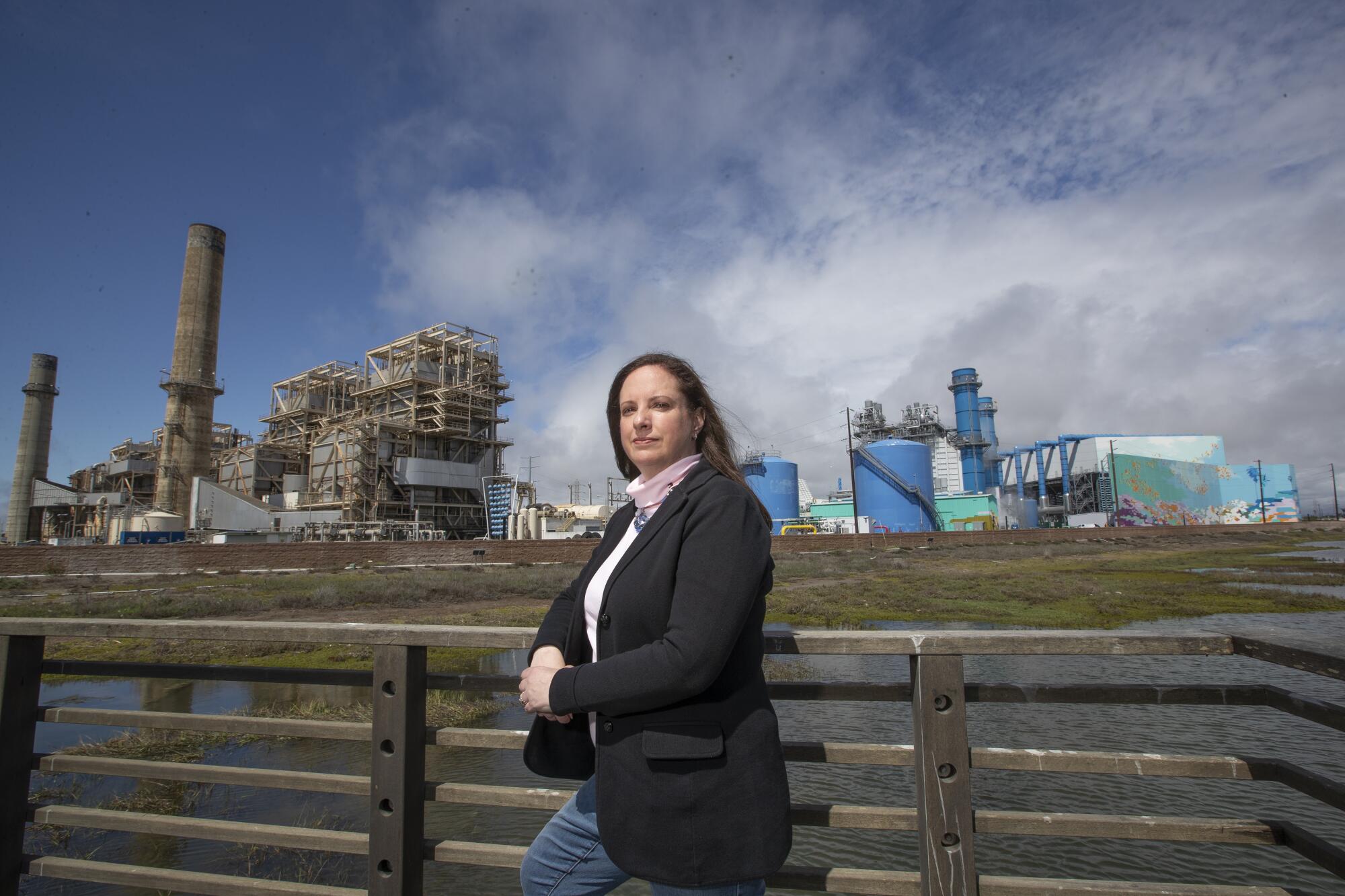
She said northern and central Orange County have ample water supplies, including groundwater and recycled wastewater, and there are other solutions that are far more economical, such as investing in conservation programs and water-efficiency improvements.
Azul is part of a coalition of environmental groups called Stop Poseidon, which also includes the California Coastkeeper Alliance, California Coastal Protection Network, Orange County Coastkeeper and the Surfrider Foundation. The coalition’s members have submitted a 153-page report to the Coastal Commission detailing their opposition to the project.
León-Grossmann said the expected increase in water rates would also be an environmental justice issue. If local officials agree to purchase the water, she said, the higher rates would disproportionately affect communities where residents are already struggling economically.
The company has said the costs have yet to be finalized but that monthly water rates could increase by roughly $3 to $6 per household.
The Coastal Commission’s staff noted that Poseidon “still has not found a definite buyer for its proposed water,” and therefore it’s not known exactly how much rates would go up, but that it’s clear the “costs for Poseidon’s water would be higher than other current and planned sources of water.”
In Oak View, a neighborhood where the predominantly Latino residents are already coping with rising rents, higher water rates would be an unwelcome burden, said Oscar Rodriguez, co-founder of the local group Oak View ComUNIDAD.

“Unaffordable water is just going to hurt families,” Rodriguez said.
That was also the conclusion of a 2019 UCLA report that said building the plant would probably bring “moderate to severe rate increases,” which would “make water less affordable for low-income households.”
Activists who oppose the project have pointed to a recent study by the Pacific Institute, which found that investing in existing technologies and standard water-saving practices could improve efficiency to reduce California’s urban water use between 30% and 48%.
Public funding is better spent on such initiatives and not desalination, said Alejandro Sobrera Barboza, coordinator for the Sunrise Movement in Orange County. “We just need to live in a more efficient and sustainable way,” he said.
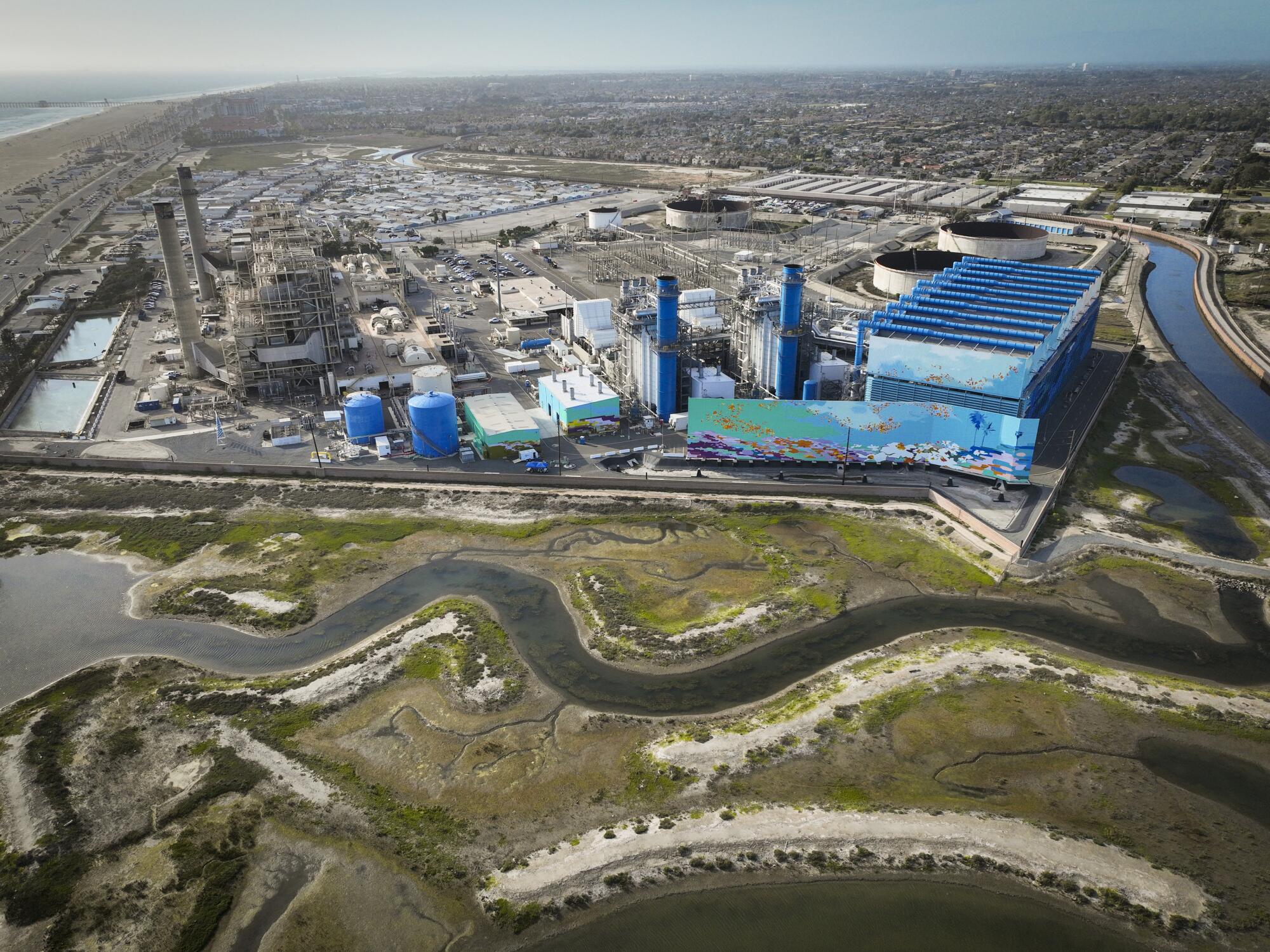
Poseidon’s Huntington Beach Seawater Desalination Plant would be capable of producing up to 50 million gallons of drinking water a day.
The plant wouldn’t be the first of its kind. Sixty miles to the south in Carlsbad, the nation’s largest desalination plant has been churning out drinking water since 2015.
Water from the Claude “Bud” Lewis Carlsbad Desalination Plant is sold to the San Diego County Water Authority under a 30-year contract. The water accounts for about 10% of what’s used by the area’s 3.3 million people.
The current price of water under the purchase agreement is $2,710 per acre-foot, substantially more than rates for imported water, which are now less than $1,090 per acre-foot.
The Water Authority says the typical monthly cost is about $5 per household.
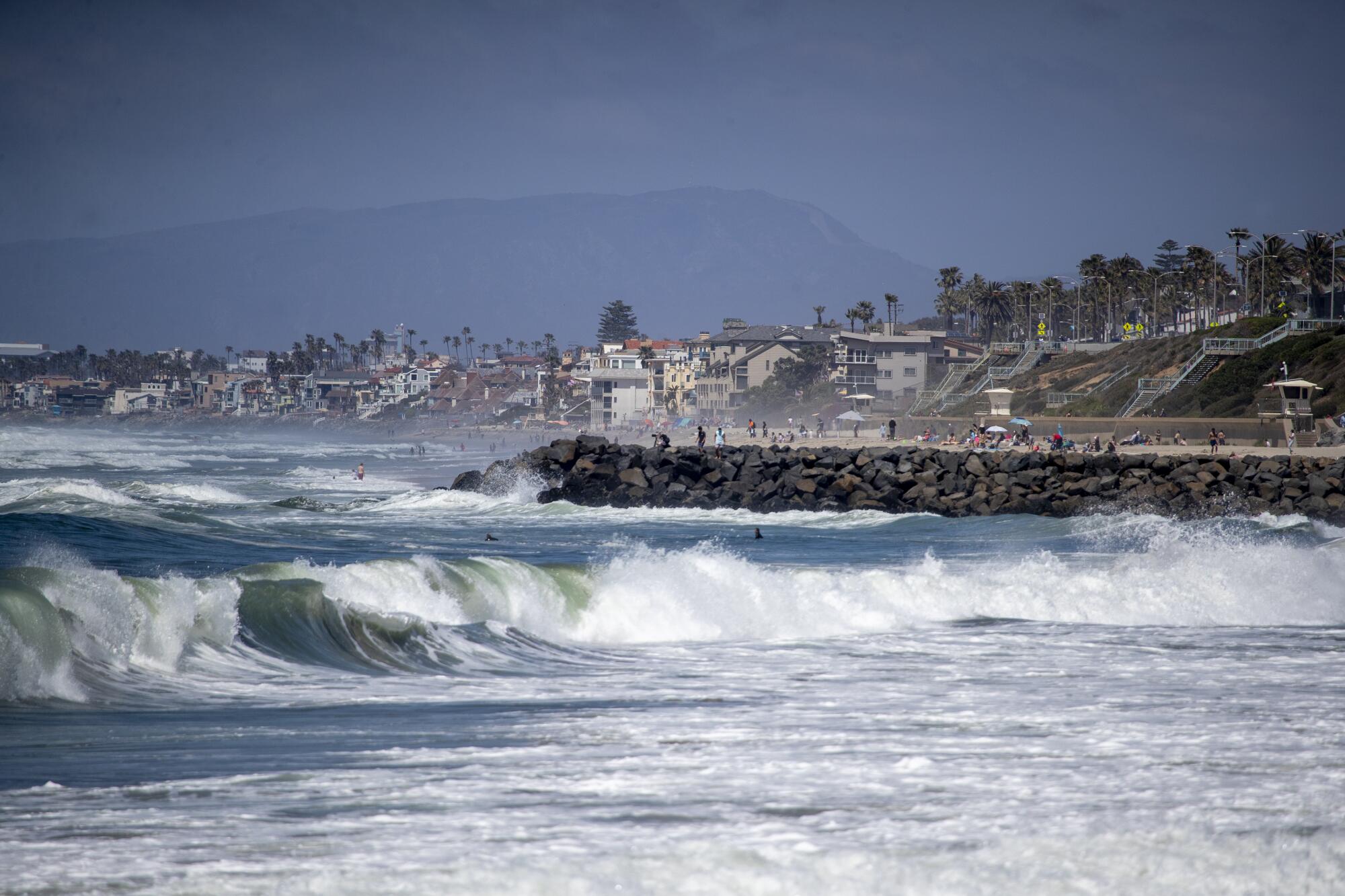
During a tour of the Carlsbad plant, Poseidon Water’s managers said the facility is bringing big benefits.
“This is the only drought-proof water supply in San Diego County,” said Jessica Jones, the company’s director of communications. “It’s also the largest local water supply in the county.”
The plant has allowed San Diego County to rely less heavily on water supplies imported from Northern California and the Colorado River.
“We’re always facing some level of drought in California, and these plants are not built overnight. And so it’s important to look forward to the future and do that planning now,” Jones said.
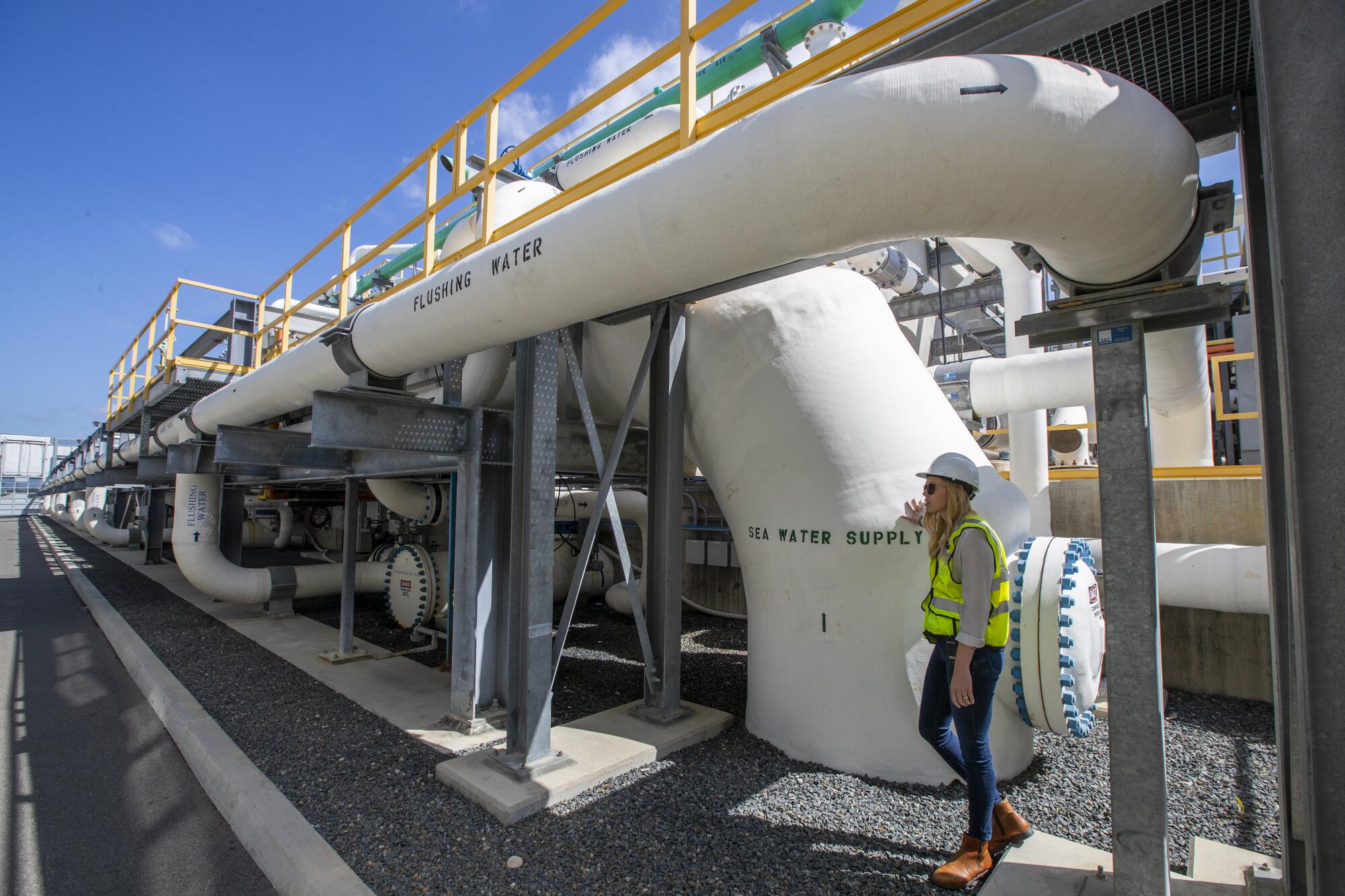
After the commission’s staff recommended rejecting the proposal, the company said in a statement: “We believe the Commission staff has erred in its recommendation.”
Poseidon Water noted that the project has been approved by other agencies, saying state regulators had “determined the facility will use the best available site, design, technology and mitigation measures feasible to protect marine life.”
The company said the plant would be safe from the effects of sea-level rise.
“California’s elected officials and regulators should consider the dire consequences that this recommendation will have for desalination in California,” the company said. “No water infrastructure project in the state of California has ever undergone this level of study and scrutiny. If this recommendation stands, it will effectively be the death knell for desalination in California.”
Jones said the effects of climate change are accelerating and that regulators “should be working hand-in-hand with the private sector to find innovative solutions that reduce our dependence on imported water and improve water resiliency.”
The California Coastal Commission is scheduled to vote on whether to approve a coastal development permit at a May 12 meeting in Costa Mesa.
The proposed plant would use some existing infrastructure at the AES Huntington Beach Energy Center, including a 14-foot-wide intake that would draw seawater from the ocean about 1,800 feet offshore. Poseidon has an agreement with AES, if it secures the permit, to buy 12 acres and build the plant on land where three old oil tanks now stand.
State scientists have said the plant’s intake and discharge would kill significant amounts of plankton and fish larvae that are vital to the marine ecosystem. The company has proposed environmental mitigation projects that include dredging an inlet of the Bolsa Chica wetlands, restoring coastal marshes and laying down an artificial reef off the Palos Verdes Peninsula to provide fish habitat.
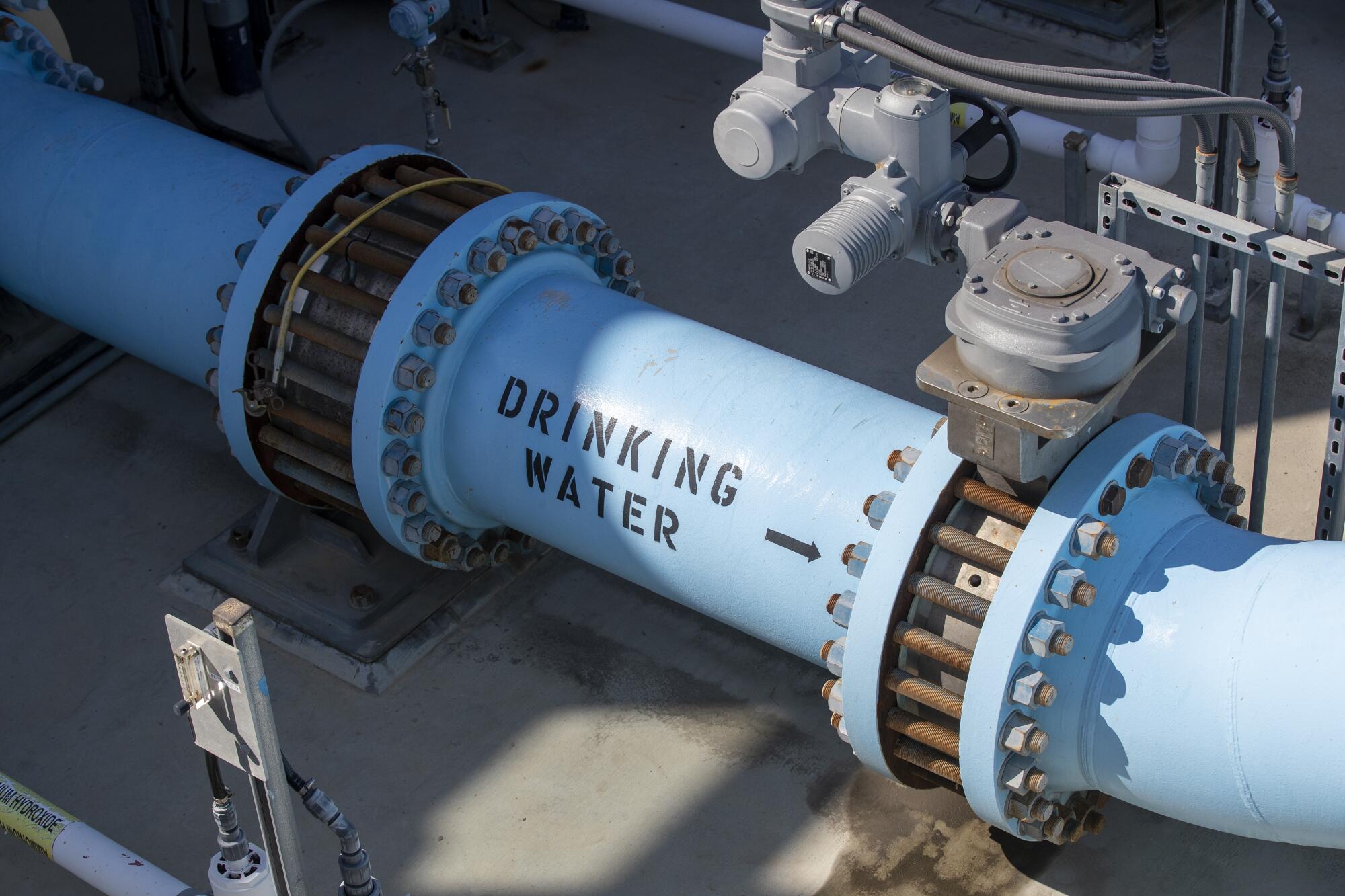
Opponents of the project have argued with the company and its supporters about the effects on the marine ecosystem, the extent to which the plant could secure renewable energy, the potential hazards at an adjacent toxic site, and whether an oil spill like the one that occurred last year would affect the plant’s operations. Activists have also said the plant would be vulnerable to sea-level rise.
The company has studied sea-level rise and other potential hazards and found no risks that the plant couldn’t be designed to address, said James Golden, project development manager for Poseidon. He said that once the oil tanks are removed, part of the construction would involve using soil to raise the ground level of the site, which would be between 6.4 feet and 13 feet above the average sea level.
“Under all circumstances, our site is not vulnerable to sea-level rise,” Golden said.
The company has yet to sign any contracts to deliver water. Officials with the Orange County Water District, which serves an area of about 2.5 million residents, have expressed interest through a nonbinding agreement and, in 2018, discussed initial estimates of what the water could cost.
Still, desalinated water is a divisive issue even for district board members.
Steve Sheldon, the board’s president, said desalinated water is necessary in the face of severe drought and the effects of climate change. He pointed out that Southern California water suppliers are expected to receive just 5% of their full allocations from the State Water Project this year, and that the Colorado River is in a worsening shortage.
“We need an independent reliable source of water to augment these unreliable sources,” Sheldon said.
Years ago, Sheldon worked as a consultant for Poseidon, but that work stopped before the subject came up at the water district, he said.
Kelly Rowe, a fellow board member, strongly opposes the company’s plan. He called the proposal an “incredibly stupid project.”
Rowe, who works as a hydrogeologist and water resources specialist, said the district has a large quantity of available groundwater in northern Orange County, supplemented by recycled wastewater from a large groundwater replenishment system. Groundwater pumping supplies 77% of the district’s water, and the remaining 23% is imported at a cost of about $1,200 per-acre foot.
Rowe said he expects the cost of desalinated water would end up being similar to the cost in San Diego County, if not more, and would far exceed the initial estimates.
“We don’t need the water,” Rowe said.
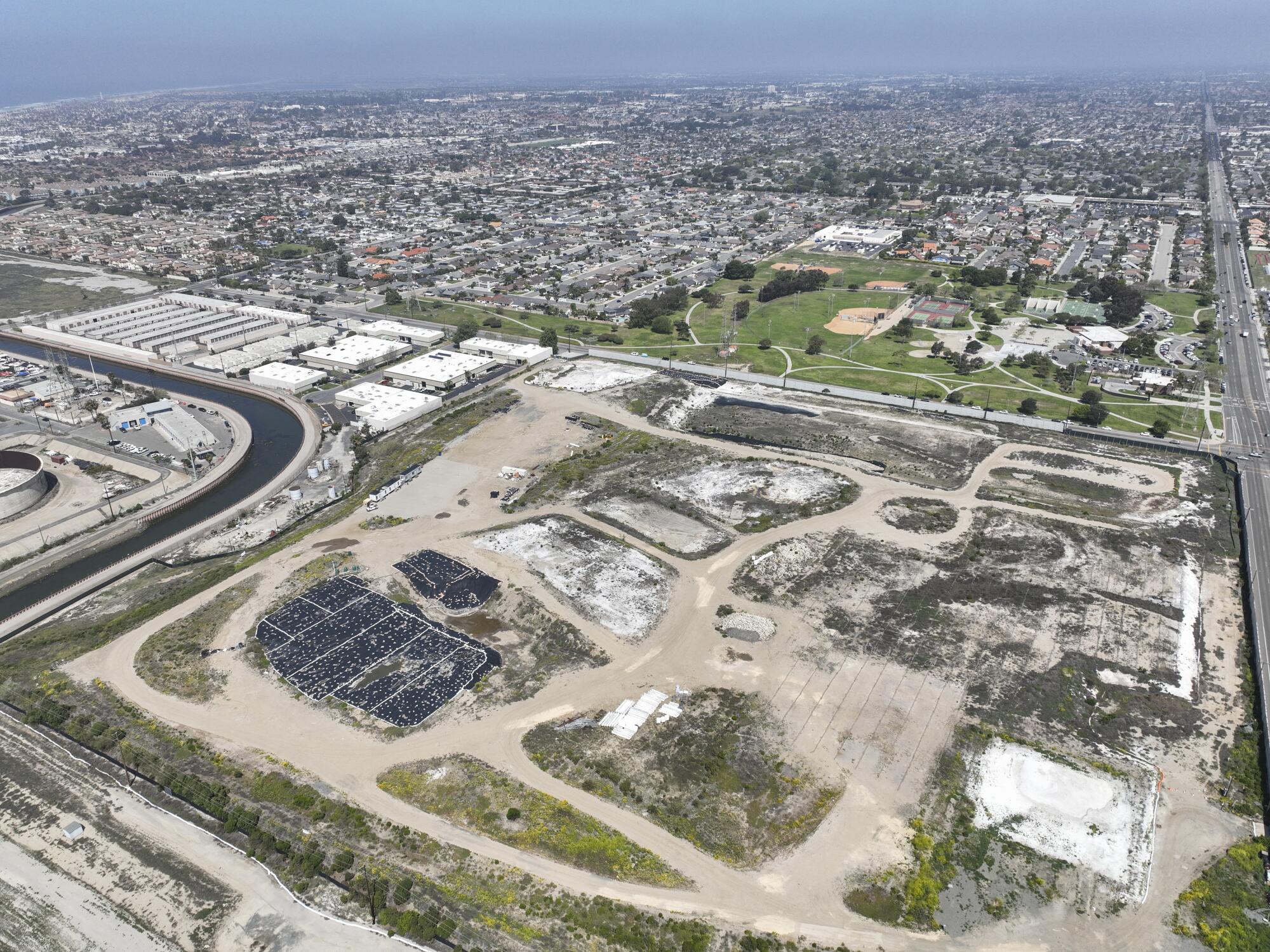
Some residents argue that the site is also subject to other hazards. They point to the adjacent 38-acre Ascon landfill site, where drilling waste from oilfields was dumped decades ago and where complicated cleanup work remains unfinished.
“This area is like Pandora’s box,” said Nancy Buchoz, who lives in a neighborhood across the street. She said she’s concerned construction work could disturb contaminated soil and release hazardous pollution.
Poseidon said there is no risk of potential contamination from the site. The Ascon cleanup project has conducted groundwater monitoring and there is “no evidence that contamination issues extend offsite,” Jones said in an email. She said pipelines would run on the opposite side of a road and “would be protected from potential groundwater infiltration.”
The company would also clean up any contamination found on the construction site, Jones said.
Huntington Beach Mayor Barbara Delgleize said the plant would boost the economy and help the area diversify with a reliable water supply.
Additional supporters include Newsom, Sen. Dianne Feinstein and other members of Congress and the state Legislature. According to California secretary of state records, the company has spent more than $979,000 on lobbying since 2019.
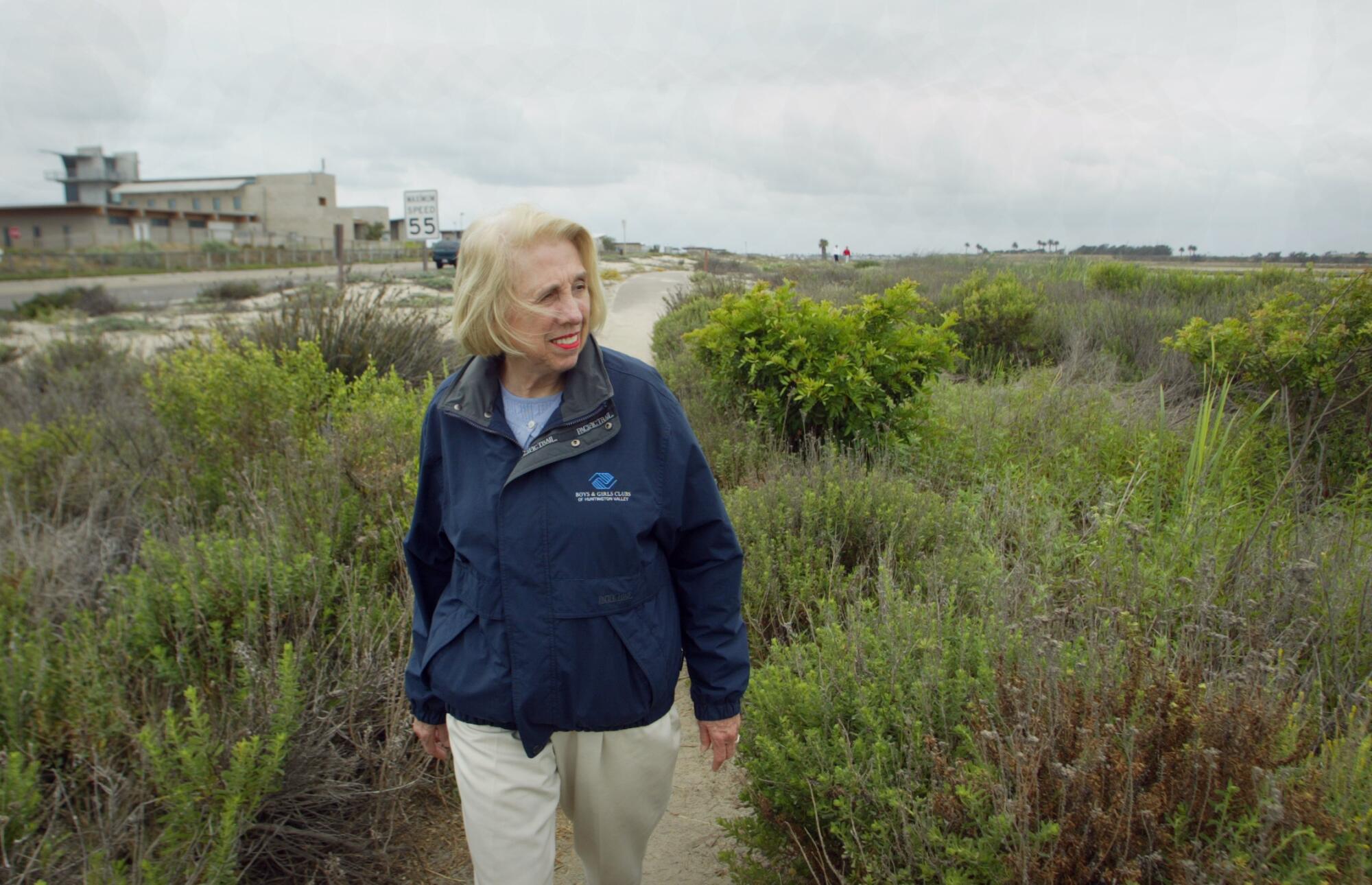
One of Poseidon’s local supporters is Shirley Dettloff, a former Huntington Beach mayor and former member of the state Coastal Commission who as an environmentalist fought to protect the Bolsa Chica wetlands from development.
“The world is changing, and it’s changing at a rapid pace, especially climate change,” Dettloff said. “I just look at the future and see that we’ve got to plan ahead.”
She and other supporters point to countries such as Israel and Australia, where desalination plants have been running for years.
The desalination business has been booming in water-stressed regions around the world. Countries across the Arabian Peninsula, from Oman to Qatar to Kuwait, depend heavily on government-subsidized desalination plants powered by fossil fuels. Plants have also been built in Jordan, Egypt, Spain, Singapore, South Africa and other countries.
In California, Santa Barbara has an operating desalination plant. And the South Coast Water District is moving forward with plans to build the Doheny Ocean Desalination Project in Dana Point, which would draw seawater through slant wells beneath the ocean floor.
Critics of the Huntington Beach proposal say a smaller design using subsurface intake wells would prevent tiny marine life from being sucked in and killed. Poseidon said the regional water board determined that subsurface intakes wouldn’t be feasible “for all reasonable intake design capacities,” and that the Orange County Water District has a goal of securing 50 million gallons per day.
Mandy Sackett, a policy coordinator for the Surfrider Foundation, said a different design could reduce environmental impacts but that the company has other priorities and is “taking advantage of California’s drought fears.”
Susan Jordan, executive director of the California Coastal Protection Network, has been fighting the project since 2010. She said that if the plant is approved, it would “set a terrible precedent for the future of California and for water supply alternatives, and it should be only a last resort.”
“This is not about providing water for California,” Jordan said. “This is about making profit for global investors and nothing more.”
More to Read
Sign up for Essential California
The most important California stories and recommendations in your inbox every morning.
You may occasionally receive promotional content from the Los Angeles Times.












